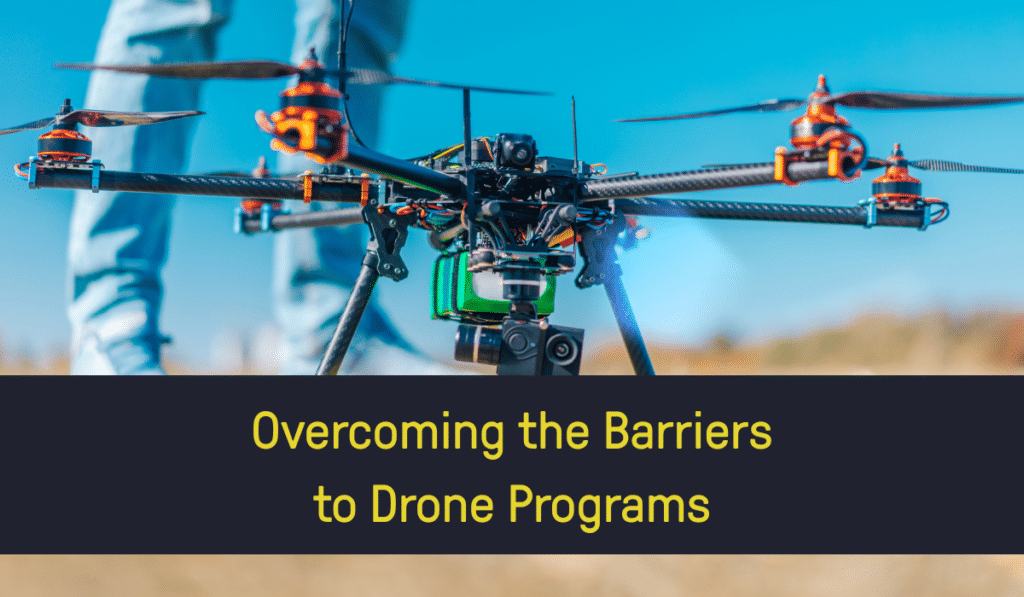What You Should Know About the ROI of a Drone Program
Before investing in something new, you need to know your expected returns. Here, we break down what you should know about the ROI of a drone program.
Are you thinking about UAVs, but not sure what the return-on-investment, or ROI of a drone program might be?
Drones have become increasingly popular in recent years, especially on the commercial side. And, with so many uses across numerous industries, it’s no wonder so many are taking notice, from your everyday worker to the CEOs of major corporations.
As a result, more and more businesses are now considering investing in drones to improve operations.
Mapping, thermal inspections, surveys, visual inspections (whether at dangerous heights or in confined indoor spaces!), and much, much more – all benefit from the use of drones.
If you’re thinking about adding drones to your organization, you’ll be pleased to know that in nearly any industry, you’ll enjoy a variety of common benefits.
These include lowering costs, improved safety, better data collection, and greater speed/efficiency.
The oil and gas industry provides an excellent example of a sector embracing UAV technology and, in doing so, reaping the rewards.
Companies like Chevron have successfully used drones for inspections, gas leak detections, and emergency response. The platform’s versatility has more than justified the investment in aircraft and trained pilots.
If you are still deciding whether or not to adopt drones, one of the best methods for tipping the scales is calculating the ROI of a drone program.
A few factors go into calculating ROI that must be considered before the simple math equation is applied.
Let’s break it down and give you the tools you need to decided if drones fit your business model.
Step 1: Identify Your Needs
Before looking at the cost of a drone, you must identify what you’ll use the drone for. Like any tool, drones are designed with a specific application in mind.
Are you looking to primarily use a drone for inspections, mapping, photography, or something else? Whatever your particular use case, there will be drones and drone payloads (cameras, LiDAR, range finders, etc.) to best suit your needs.
Identifying the most likely use for your drone will help determine not only the costs associated with adopting UAVs, but also help identify areas of cost savings.
For most operations, this is the most important part of calculating the ROI of a drone program. Remember, that it never hurts to ask an expert, especially in this crucial step.
Step 2: Identify Costs
Now that you’ve determined how you hope to use your drone, it’s time to see what it will cost.
Here, you face two options in the adoption of drones: in-house, or outsourcing. It’s important to note that each comes with pros and cons when calculating the ROI of a drone program.
For some organizations, outsourcing drone needs remains the most economical solution. This is often the case for small organizations, or those who envision using drones infrequently.
The second option is bringing drones into your organization with an in-house. For mid-size to large organizations, building in-house drone capabilities is where a more significant ROI is realized.
The cost of a drone can easily be determined by contacting one of the many well-established drone dealers in your region. Be sure to include any accessories that will be needed for your operations, such as extra batteries, landing pads, ND filters, etc. Pilot training, insurance, maintenance, and replacement costs should also be considered.
Certainly, calculating the ROI of an in-house drone operation requires much more consideration than a simple price quote for an outsourced job. But, if you’ll be using them on a frequent basis, or require on-demand services, it can absolutely pay off down the road.
Now, if this list has you concerned, fear not! The best part comes in the next step, where you’ll see why drones are an easy sell and an excellent investment.
Step 3: Identify Gains
The best way to illustrate calculating the ROI of your drone program is with an example.
Let’s say you’re running a large construction site and currently using traditional methods for mapping your site and calculating stockpile levels.
Here, both mapping and volumetric calculations require the use of a survey team.
Now, it’s a pretty straightforward comparison to look at the cost of completing the job with your survey team vs. the cost of bringing in drones. That said, that leaves many of the gains from using drones unidentified.
Drones can complete the mapping and volumetric counts in a fraction of the time a survey team could, translating to significant time savings.
Additionally, drones don’t require the halting of ground operations in the area, like heavy equipment movement. So, you’ll need to factor in the additional savings related to the lack of impact on your current operations.
Even further, other gains include improved safety, which can lower insurance rates, better project management, lower labor costs (drones don’t need unemployment and medical insurance), and more.
Step 4: Calculate the ROI of a Drone Program
Now that you have all the information gathered, it’s time to plug everything into the equation. (Sorry, but you’ll need to do some math here!)
To find your ROI percentage, divide the net gains by the costs, and then multiply the result by 100. For example, if the gains from drone operations are $50,000 and the costs are $20,000, the ROI would be ($50,000 – $20,000)/$20,000 x 100 = 150%.
Key Takeaways
There’s no shortage of reasons the UAV industry continues its rapid growth.
Drones remain an excellent investment, and can quickly pay for themselves many times over. When calculating the ROI for drones, identify the need, determine the costs, think of all the possible gains, and apply that to the ROI equation.
You’ll be surprised how well drones sell themselves.
—
So, are you ready to take advantage of drones for your organization? If so, how do you get started? Do you hire out or bring your drone program in-house?
At Consortiq, we help you find a better way with drones, from consultation and program implementation to actually doing the work for you.
Ready to learn more? Just complete the form below to schedule a risk-free consultation!

David Daly - Contributing Author
David Daly, is an award-winning photographer/writer and licensed (FAA) Commercial sUAS pilot. A graduate of the United States Naval Academy, David is a former Marine Corps officer with a BS in Oceanography and has earned his MBA from the University of Redlands. David has worked for Fortune 100 companies and has a background in aerospace, construction, military/defense, real estate, and technology.
Ready to Utilize Drones For Your Organization?
Contact Us Today to Get Started!




